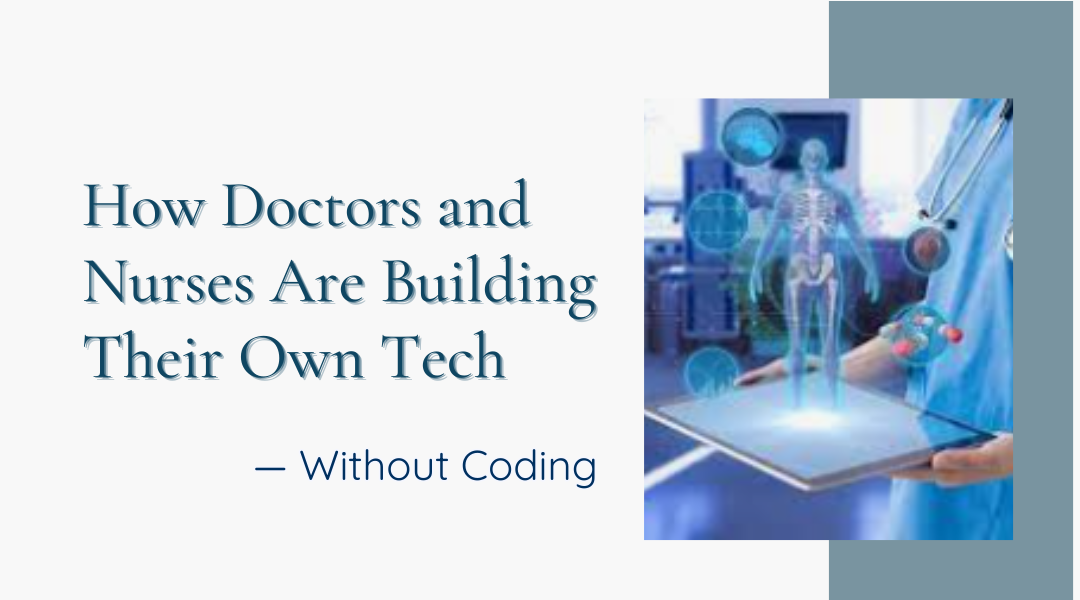Healthcare runs on urgency. A missed alert, a delayed test result, or a clogged-up admin process can ripple into life-or-death consequences. Yet for years, frontline staff faced a frustrating paradox: the people who best understood patient needs had zero power to fix the clunky tech slowing them down.
That’s changing. Across clinics and hospitals, medical teams are quietly taking matters into their own hands—using intuitive low-code tools to build solutions that actually work. No waiting for IT. No million-dollar vendor contracts. Just nurses, doctors, and admins crafting apps as easily as they’d draft an email.
Code-Free Breakthroughs: When Clinicians Become Developers
Take Dr. Sarah Lin, an ER physician at a community hospital in Ohio. Frustrated by how often critical lab results got buried in EHR alerts, she used a drag-and-drop platform to create a triage dashboard that:
- Pulls real-time vitals from monitors
- Flags abnormal results in red
- Pings the right specialist based on severity
“It took me three afternoons,” she says. “Before, we’d have nurses sprinting down halls to track down residents. Now, the system escalates emergencies automatically.”
Telehealth in a Weekend: The Pandemic’s Silver Lining
When COVID hit, a rural Texas clinic needed telehealth—fast. Instead of waiting months for a corporate solution, their office manager built a secure video platform in 72 hours using a low-code tool. Features included:
- SMS appointment reminders (cutting no-shows by 30%)
- Automated intake forms that prepopulated EHRs
- A symptom checker that prioritized high-risk patients
“We went from zero to fully remote in days,” says nurse practitioner Carlos Mendez. “Most of our elderly patients just clicked a link—no app downloads, no tech support calls.”
The Back-Office Revolution: Killing Paper, Saving Lives
Bureaucracy isn’t just annoying in healthcare—it’s dangerous. At a Boston hospital, the ICU team grew tired of tracking ventilator supplies on clipboards. Their fix? A staff-built app that:
- Scans inventory via barcode
- Alerts procurement when stock dips
- Predicts shortages using historical data
“Last winter’s flu surge would’ve wiped us out,” admits chief nurse Alicia Torres. “But the app rerouted extra ventilators from pediatrics before we hit crisis mode.”
Why This Works: Speed Meets Safety
Traditional health tech moves at a glacial pace. Low-code flips the script:
- Compliance by design: Built-in HIPAA controls (encryption, audit logs) let teams innovate without legal headaches.
- AI without the black box: A pediatric unit in Nashville trained a symptom chatbot on 10 years of discharge notes—ensuring it “speaks” in clinically accurate terms.
- Human oversight: When an oncology app’s AI misflagged a rare drug interaction, doctors overrode it instantly—no IT ticket required.
The Real Win? Culture Shift
The biggest impact isn’t just faster apps—it’s who gets to make them. At Phoenix Children’s Hospital, physical therapists built a mobility tracker for post-op kids. Social workers designed a homelessness risk screener that connects families to housing aid.
“These aren’t ‘nice-to-haves’—they’re closing gaps we didn’t even realize existed,” says CIO Mark Reynolds. “And because the builders are also the users, adoption is instant.”
Cautionary Tales: Where Low-Code Stumbles
Not every experiment sticks. A Midwest hospital’s AI discharge planner failed spectacularly—because it assumed all patients had smartphones. The team regrouped, added paper instructions and voice calls, and relaunched in a week.
Lesson? Start small. Pilot on one ward. Listen to the nurse who mutters, “This’ll never work.”
The Future: Healthcare’s DIY Movement
Imagine:
- A dialysis nurse coding an app that predicts low-blood-pressure episodes
- A front-desk clerk automating Medicaid verification
- A pharmacist building a tool to flag dangerous drug combos
This isn’t sci-fi. It’s happening now—because the people saving lives are finally able to fix the systems that slow them down.
The bottom line? The best health tech doesn’t come from a Silicon Valley startup. It comes from the break room whiteboard—where someone sighs, “There’s got to be a better way,” and now, there is.
